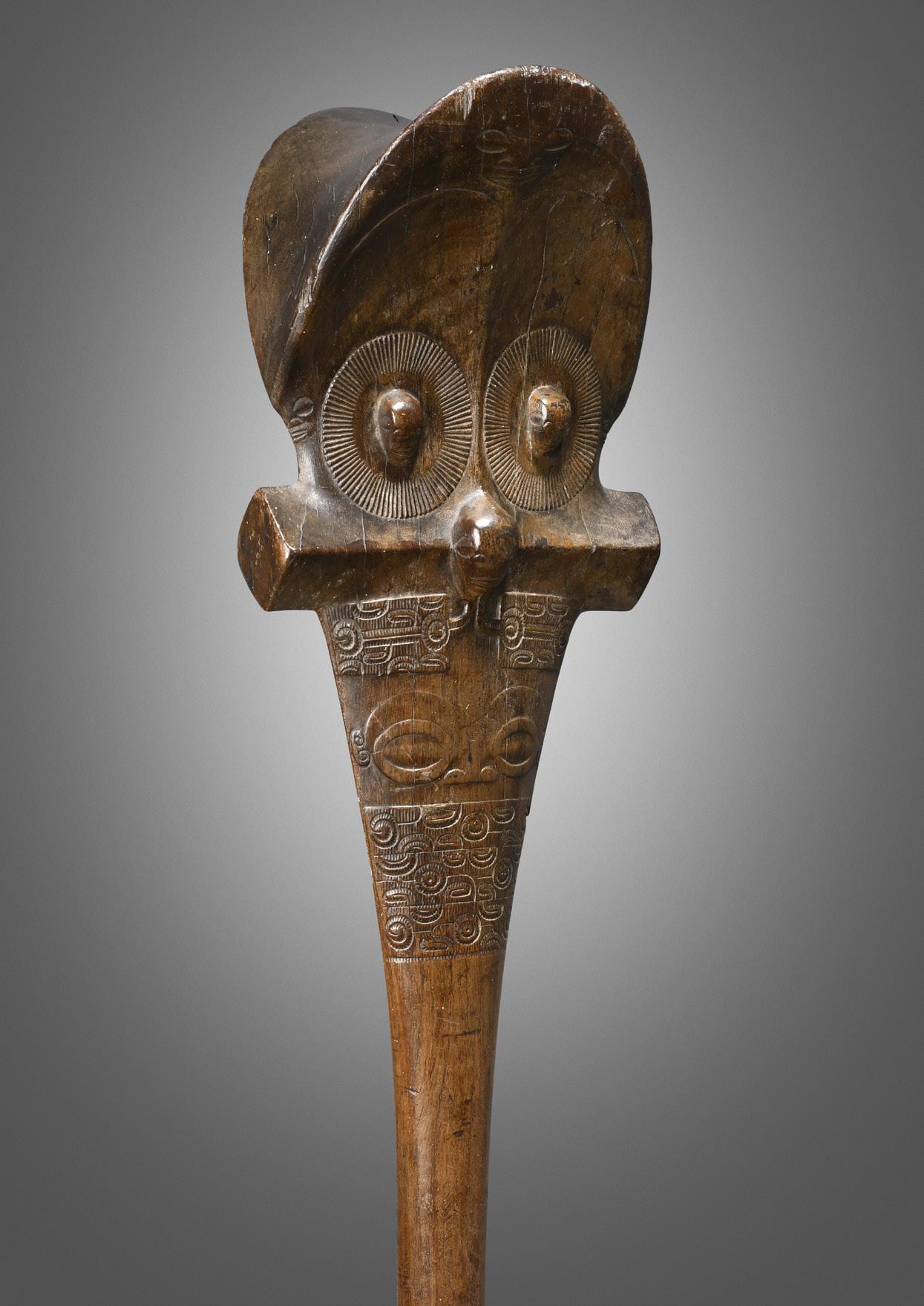
3 minute read
TRIBAL ART & ANTIQUITIES
TRIBAL ART& ANTIQUITIES
16th February 2021

DEPARTMENT WILL HOBBS +44 (0) 1722 339752 wh@woolleyandwallis.co.uk
ZOE CORDEY +44 (0) 1722 446980 zc@woolleyandwallis.co.uk
Now accepting consignments for the 16th February 2021 sale.
Closing date for entries 30th November 2020.
Opposite. A Marquesas Islands U’u war club, 19th century, 137cm long Estimate £20,000 – 30,000
1. A Roman marble stele, circa 2nd century AD, 60cm x 50cm (detail) Estimate £10,000 – 15,000

2. A Kalinga shield, Northern Luzon, Philippines, early 20th century, 118cm high Estimate £300 – 500

Our Autumn / Winter 2019 edition featured on the front cover a well provenanced Marquesas Islands U’u war club, that we sold in our September Tribal Arts sale to an Australian collector for £88,750 (including buyer’s premium). So, it was with great excitement on opening a recent email with a request to help a family find out more about “The Colonel’s stick,” that another U’u was staring back at me. A gift to the present owners’ parents from Lt Col G H Lambert, who had fought in the Boer War and WWI and was a member of the Lambert family of silversmiths. Since being gifted to the present family this club had largely been put to one side with little consideration of its origin – possibly South Africa with the Boer War connection, but instead it originates from the middle of the South Pacific from the small group of islands in French Polynesia, the Marquesas Islands.
The original owner would have been a high ranking member of Marquesasian society, a leader in warfare, with only a priest and a chief having a higher status. The club was not only a formidable weapon but also an object of prestige. Carved as a stylised human with pairs of eyes and noses on both sides represented as small tiki heads, with further eyes above, below and to the side. There are a total of fourteen pairs of eyes, including two to the curved edge above the arms. These are thought to draw on the sacred powers of the ancestors, giving the owner protection in warfare and in effect having ‘eyes’ looking in four directions. The top of the club has been modelled with a concave surface which would allow the owner to support himself by placing it under his arm and leaning on it, the variation in size of these clubs is testament to the single owners ‘made to measure’ requirement.
The lightwood pronged shield shown is from the Kalinga people of the Cordillera Mountains of Northern Luzon in the Philippines. The form takes that of a stylised human with the lower prongs as the legs, the protective board is the body and the upper prongs as the raised arms and head. It is painted black with rows of white painted circles. The rattan binding gives the light wood extra strength if split in combat. The prongs would allow the warrior to both parry and attack, holding in the left hand through a small handle, large enough for three fingers, allowing the thumb free to grip a spear.
An extraordinary fortuitous garden find has revealed three generations of a Roman family probably living in Greece or Asia Minor, around 2000 years ago. The heavy marble stele has two olive wreaths carved in relief, each framing Greek lettering and three rows below, reading ‘The People (and) the Young Men (honour) Demetrious (son) of Metrodoros (the son) of Leukios.’ It is likely to have been brought back to the UK as a Grand Tour acquisition and used in a country house as decoration in the late 18th/early 19th century and then sadly discarded on the demolishing of the house in the early to mid 20th century. Its next resting place was part of a garden rockery of a modern house, where it lay until the new owner’s decision for a larger garden, unearthed a very heavy slab of stone with carving on one side. The stele is now back inside and awaiting its next home…










